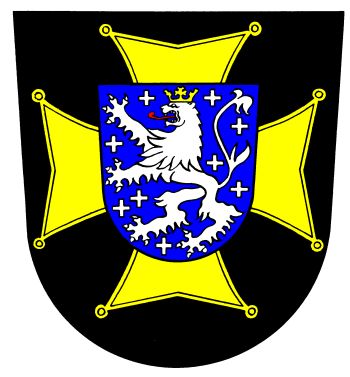Ludweiler: Difference between revisions
Jump to navigation
Jump to search
Knorrepoes (talk | contribs) m (Text replace - "Amt Ludweiler" to "Amt Ludweiler-Warndt") |
Knorrepoes (talk | contribs) m (Text replace - "[[Literature" to "{{media}} [[Literature") |
||
| Line 21: | Line 21: | ||
The cross is the Hugenottenkreuz, the cross of the Huguenots, as the village was founded by Count Ludwig von Nassau-Saarbrücken for Huguenot refugees from France from 1707 onwards. The escutcheon thus shows the arms of Nassau-Saarbrücken, to which the village belonged until 1803. The black field symbolises the industry and mining in the region. | The cross is the Hugenottenkreuz, the cross of the Huguenots, as the village was founded by Count Ludwig von Nassau-Saarbrücken for Huguenot refugees from France from 1707 onwards. The escutcheon thus shows the arms of Nassau-Saarbrücken, to which the village belonged until 1803. The black field symbolises the industry and mining in the region. | ||
{{media}} | |||
[[Literature]] : Lehne and Kohler, 1981 | [[Literature]] : Lehne and Kohler, 1981 | ||
Revision as of 01:05, 9 July 2014
| Heraldry of the World Civic heraldry of Germany - Deutsche Wappen (Gemeindewappen/Kreiswappen) |
LUDWEILER
State : Saarland
District (Kreis) : Saarbrücken
Amt : Amt Ludweiler-Warndt
Incorporated into: 1974 Völklingen
Official blazon
Origin/meaning
The arms were officially granted on June 26, 1967.
The cross is the Hugenottenkreuz, the cross of the Huguenots, as the village was founded by Count Ludwig von Nassau-Saarbrücken for Huguenot refugees from France from 1707 onwards. The escutcheon thus shows the arms of Nassau-Saarbrücken, to which the village belonged until 1803. The black field symbolises the industry and mining in the region.
Contact and Support
Partners:
Your logo here ?
Contact us
© since 1995, Heraldry of the World, Ralf Hartemink 
Index of the site
Literature : Lehne and Kohler, 1981











